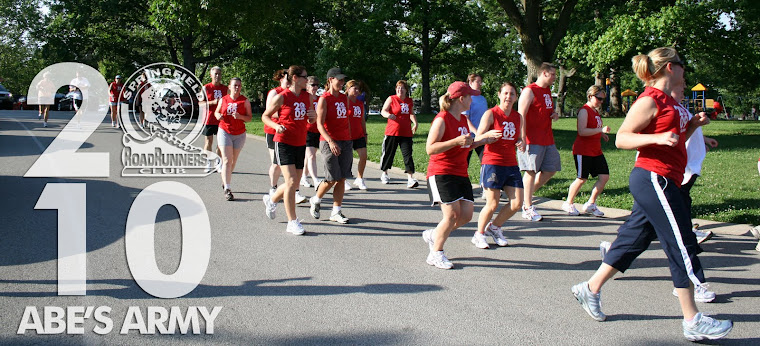

RRCA: Kids Run the Nation®
Taken from the Kids Run the Nation Program Guide.
Taken from the Kids Run the Nation Program Guide.
The Road Runners Club of America promotes the following guidelines for youth running. These guidelines are based on the 10 developmental principles that guide training and racing for young distance runners outlined in the book Training for Young Distance Runners written by Larry Greene, PhD and Russ
Pate, PhD, published by Human Kinetics.
Pate, PhD, published by Human Kinetics.
~Make Running Fun:
First and foremost, running should be fun. Do not use running as a punishment. Encourage children to participate and try their best.
First and foremost, running should be fun. Do not use running as a punishment. Encourage children to participate and try their best.
~Emphasize good technique: Teach youth good form early and help eliminate
bad habits such as excessive arm movement, twisting of the upper body, or over striding.
bad habits such as excessive arm movement, twisting of the upper body, or over striding.
~Focus on participation and self-improvement: In grade school, running should be about participation and developing a healthy lifestyle, not about being the fastest kid in the school or program. Save competition for middle and high
school aged students.
school aged students.
~Consider individual differences: Avoid a one size fits all running program. Accommodate for differences in abilities within the group. Children mature both physically and emotionally at different rates, and this will factor into
their ability to participate in running.
their ability to participate in running.
~Limit systematic training and competition before puberty: Before puberty
children are rapidly growing and changing. Excessive, systematic training may interfere with normal growth and cause injury in a child. Between the ages of 3 and 9, encourage regular exercise, which can include organized running for fun
as outlined in this program guide. Around the age of 8-12, children may enjoy participation in a more organized running program that has a more systematic training environment that lasts 2-3 months. Around the age of 12 for girls and 14 for boys, key developmental changes will enable students to slowly increase training distance and duration leading to participation in a systematic and competitive training environment.
children are rapidly growing and changing. Excessive, systematic training may interfere with normal growth and cause injury in a child. Between the ages of 3 and 9, encourage regular exercise, which can include organized running for fun
as outlined in this program guide. Around the age of 8-12, children may enjoy participation in a more organized running program that has a more systematic training environment that lasts 2-3 months. Around the age of 12 for girls and 14 for boys, key developmental changes will enable students to slowly increase training distance and duration leading to participation in a systematic and competitive training environment.
~Increase running workload gradually: Running workload includes volume
(distance), intensity (speed or effort), and frequency (number of days a week). Just like with adult, running training, children should start a running program
with a low volume, low intensity, and limit frequency to a couple days a week. Workload should increase over the duration of the program, but should remain
appropriate for the individual student.
(distance), intensity (speed or effort), and frequency (number of days a week). Just like with adult, running training, children should start a running program
with a low volume, low intensity, and limit frequency to a couple days a week. Workload should increase over the duration of the program, but should remain
appropriate for the individual student.
~Participate in age appropriate running events: Running in a kid’s fun run
or youth track event can be a great experience for kids. For children 5 and under focus on “dash” events that range from a few yards to 400 meters. For children 5 and over, kids fun runs that are a ½ to 1 mile long may be considered, but allow for a combination of running and walking. Children ages 12 and over may want to participate in a 5K run. Children ages 15 and older may want to participate in a 10K to half marathon event. Children 18 and older may want
to participate in a marathon or further distance. These are general guidelines and the distance a child can physically and emotionally tolerate will depend on the individual, however longer distances (10K and over) should wait until after
puberty.
or youth track event can be a great experience for kids. For children 5 and under focus on “dash” events that range from a few yards to 400 meters. For children 5 and over, kids fun runs that are a ½ to 1 mile long may be considered, but allow for a combination of running and walking. Children ages 12 and over may want to participate in a 5K run. Children ages 15 and older may want to participate in a 10K to half marathon event. Children 18 and older may want
to participate in a marathon or further distance. These are general guidelines and the distance a child can physically and emotionally tolerate will depend on the individual, however longer distances (10K and over) should wait until after
puberty.

No comments:
Post a Comment